
27 Aug, 2012
Indonesia’s Mbaru Niang Tops 2012 UNESCO Asia-Pacific Heritage Awards
Bangkok, 27 August 2012 — Mbaru Niang, a village of traditional houses in Flores Island, East Nusa Tenggara, Indonesia has been honoured with the Award of Excellence in the 2012 UNESCO Asia-Pacific Heritage Awards for Cultural Heritage Conservation.
The two Awards of Distinction include the Sethna Buildings in Mumbai, India and the Water Systems in Hampi, India. The three Awards of Merit include the Zhizhusi Complex in Beijing, China; the Chandramauleshwat Temple in Hampi, India; and Khilingrong Mosque in Shigar, Pakistan. Two Honourable Mentions were also announced. They include the William Street Precinct in Perth, Australia and Jaisalmer Fort in Rajasthan, India.
The jury panel, consisting of international conservation experts, was particularly impressed with this year’s entry submissions. “The diversity of project types entered was encouraging, covering a broad spectrum of conservation issues, from urban streetscapes, military properties to archaeological sites. The Award of Excellence was given to Mbaru Niang, which represents a new kind of recognition for architectural conservation, whereby intangible heritage and traditional knowledge form the basis of the conservation method”, said Tim Curtis, Chair of the Jury and Chief of Culture Unit, UNESCO Bangkok.
The 2012 Jury Commendation for Innovation was awarded to the Reading Room of the Portuguese School of Macau in Macao (SAR) China. The Jury Commendation recognizes newly-built structures which demonstrate outstanding standards for contemporary architectural design which are well-integrated into historic contexts.
The UNESCO Asia-Pacific Awards for Cultural Heritage Conservation recognizes the efforts of private individuals and organizations that have successfully restored and conserved structures and buildings of heritage value in the region. UNESCO believes that recognizing private efforts to restore and adapt historic properties will encourage other property owners to undertake conservation projects within the community, either independently or by seeking public-private partnerships.
A total of 43 entries, from 11 countries in the region, were submitted for consideration. The winners were selected based on the way that the projects reflected a clear understanding and application of the awards criteria, such as the articulation of the spirit of place, appropriate use or adaption, or the project’s contribution to the surrounding environment and the local community’s cultural and historical continuum.
Eligible projects must be more than 50 years old and the restoration must have been completed within the past 10 years. Buildings must have also been in viable use for at least one year from the date of the awards announcement.
The 2012 cycle of the UNESCO Asia-Pacific Awards for Cultural Heritage Conservation is supported by the Macau Foundation. UNESCO and the Macau Foundation share similar objectives in promoting, developing and nurturing the importance of our cultural heritage.
Profiles of 2012 Heritage Awards Winners
 Mbaru Niang in Wae Rebo Village, Flores Island, East Nusa Tenggara, Indonesia received an Award of Excellence. The community-led rebuilding project, initiated by the voluntary effort of Indonesia’s Rumah Asuh Foundation, is exceptional for the way that it successfully engaged with a broad range of conservation issues at the local level. Through the valorization of traditional knowledge in continuing architectural form and construction practices, the project has re-established sustainability of the local built environment and has promoted the pride and spirit of the community.
Mbaru Niang in Wae Rebo Village, Flores Island, East Nusa Tenggara, Indonesia received an Award of Excellence. The community-led rebuilding project, initiated by the voluntary effort of Indonesia’s Rumah Asuh Foundation, is exceptional for the way that it successfully engaged with a broad range of conservation issues at the local level. Through the valorization of traditional knowledge in continuing architectural form and construction practices, the project has re-established sustainability of the local built environment and has promoted the pride and spirit of the community.
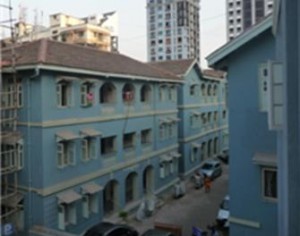
The Award of Distinction was given to Sethna Buildings in Wadia Street, Mumbai, India. The repair and renovation of the early 20th century residential buildings in Wadia Street, represents an outstanding model for protecting and extending the use and life of historically-significant social housing under threat of demolition from urban renewal and development. The project is a celebration of an often unloved and underappreciated, yet socially significant, part of a nation’s heritage and should be seen as an exemplar to encourage and stimulate a continuation of the rehabilitation of social housing projects across the Asia-Pacific region.
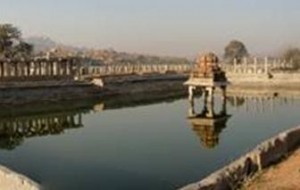 The Historic Water System of Hampi, located in Vitthala Precinct, Hampi, Karnataka, India was also recognized with an Award of Distinction. The holistic approach to historic site interpretation and the rehabilitation of a culturally significant water system for contemporary use are features that set this project apart. The fact that this occurs within a living cultural landscape make it exemplary and standard-setting. Furthermore, the project demonstrates the productive outcome of a positive engagement between multiple public and private stakeholders at the national and local levels in using historical knowledge to resolve a range of important planning issues.
The Historic Water System of Hampi, located in Vitthala Precinct, Hampi, Karnataka, India was also recognized with an Award of Distinction. The holistic approach to historic site interpretation and the rehabilitation of a culturally significant water system for contemporary use are features that set this project apart. The fact that this occurs within a living cultural landscape make it exemplary and standard-setting. Furthermore, the project demonstrates the productive outcome of a positive engagement between multiple public and private stakeholders at the national and local levels in using historical knowledge to resolve a range of important planning issues.
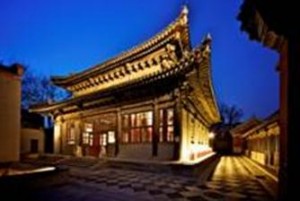 The Zhizhusi Complex in Beijing, China has received an Award of Merit. The comprehensive restoration of the architecturally significant late 17th century Zhizhusi temple complex in Beijing has enabled the rich layers of its history to be revealed, enhanced and celebrated. Prior to the restoration, the historic buildings on the complex were in a ruinous condition, lost among incompatible newly-added structures. The temple complex has now been restored, interpreted and returned once again to the public with a new function as a venue for cultural events and activities.
The Zhizhusi Complex in Beijing, China has received an Award of Merit. The comprehensive restoration of the architecturally significant late 17th century Zhizhusi temple complex in Beijing has enabled the rich layers of its history to be revealed, enhanced and celebrated. Prior to the restoration, the historic buildings on the complex were in a ruinous condition, lost among incompatible newly-added structures. The temple complex has now been restored, interpreted and returned once again to the public with a new function as a venue for cultural events and activities.
 An Award of Merit was also given to the Chandramauleshwat Temple in Hampi, Karnataka, India. The stabilization work carried out at the ruined site of the 16th century Chandramauleshwat Temple in Hampi sets a benchmark for conservation practice at archaeological sites in India. The project was guided by meticulous technical and archaeological investigations of the stratigraphy of the site. The project success owes much to the partnership established between the local government and the Hampi Foundation with financial assistance from the Global Heritage Fund, which establishes a worthy model for future conservation work.
An Award of Merit was also given to the Chandramauleshwat Temple in Hampi, Karnataka, India. The stabilization work carried out at the ruined site of the 16th century Chandramauleshwat Temple in Hampi sets a benchmark for conservation practice at archaeological sites in India. The project was guided by meticulous technical and archaeological investigations of the stratigraphy of the site. The project success owes much to the partnership established between the local government and the Hampi Foundation with financial assistance from the Global Heritage Fund, which establishes a worthy model for future conservation work.
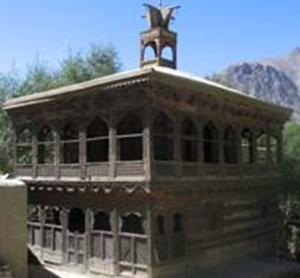 The Khilingrong Mosque in Shigar, Pakistan was also recognized with an Award of Merit. Constructed four centuries ago, Khilingrong Mosque, situated in the isolated mountainous region of the Shigar Valley, was in an advanced state of deterioration when the Aga Khan Cultural Service of Pakistan began the much needed restoration work. Not only has the project reinstated the religious function of the building, it has also reinvigorated an important public space for day-to-day social interactions among the community.
The Khilingrong Mosque in Shigar, Pakistan was also recognized with an Award of Merit. Constructed four centuries ago, Khilingrong Mosque, situated in the isolated mountainous region of the Shigar Valley, was in an advanced state of deterioration when the Aga Khan Cultural Service of Pakistan began the much needed restoration work. Not only has the project reinstated the religious function of the building, it has also reinvigorated an important public space for day-to-day social interactions among the community.
 William Street Precinct in Perth, Australia received an Honourable Mention. The revitalization of the heritage-listed William Street Precinct in Perth has transformed an area where a majority of the buildings had either been neglected or under-utilized. The redevelopment of this area, which was catalyzed by an innovative public-private partnership scheme led by the Western Australia State Government, has injected a new lease of life into this historic precinct. The success of the project can be attributed to the partnerships created between government authorities and various stakeholders, including property financiers, heritage experts, local architects and prospective tenants.
William Street Precinct in Perth, Australia received an Honourable Mention. The revitalization of the heritage-listed William Street Precinct in Perth has transformed an area where a majority of the buildings had either been neglected or under-utilized. The redevelopment of this area, which was catalyzed by an innovative public-private partnership scheme led by the Western Australia State Government, has injected a new lease of life into this historic precinct. The success of the project can be attributed to the partnerships created between government authorities and various stakeholders, including property financiers, heritage experts, local architects and prospective tenants.
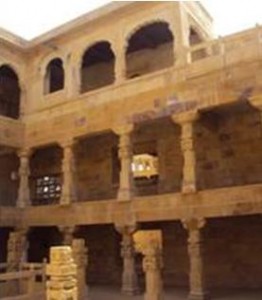 The Ha Raj Ji Mahal in Jaisalmer Fort, Rajasthan, India was granted an Honourable Mention. Responding to the threat posed by the progressive decay of the fabled 17th century Ha Raj Ji Mahal, which had suffered from the ravages of time in an unforgiving desert environment, the project has heroically rescued and restored the oldest and most majestic palace of the imposing Jaisalmer Fort. The work is exemplary for the advanced engineering work employed to stabilize foundations, which was the main priority of conservation. The restored palace is now used for social and cultural events thus ensuring a viable and sustainable function of the space while maintaining its historical authenticity.
The Ha Raj Ji Mahal in Jaisalmer Fort, Rajasthan, India was granted an Honourable Mention. Responding to the threat posed by the progressive decay of the fabled 17th century Ha Raj Ji Mahal, which had suffered from the ravages of time in an unforgiving desert environment, the project has heroically rescued and restored the oldest and most majestic palace of the imposing Jaisalmer Fort. The work is exemplary for the advanced engineering work employed to stabilize foundations, which was the main priority of conservation. The restored palace is now used for social and cultural events thus ensuring a viable and sustainable function of the space while maintaining its historical authenticity.
Profile of 2012 Heritage Awards Jury Commendation for Innovation Winner
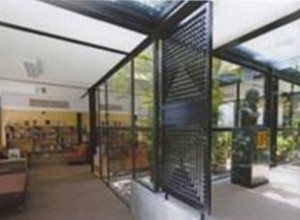 The winner of the Jury Commendation for Innovation is the Reading Room of the Portuguese School of Macau in Macao (SAR) China. Inserted into the courtyard of the Portuguese School of Macao, the new Reading Room has provided an understated contemporary addition to this aesthetically noteworthy 1963 modernist complex. By demonstrating an elegant approach to extending the school’s useable space in a highly dense urban context that faces redevelopment pressure, the new Reading Room contributes an additional layer of architectural significance to a modern heritage landmark and enhances the continued functionality of this icon of the Macanese Portuguese community.
The winner of the Jury Commendation for Innovation is the Reading Room of the Portuguese School of Macau in Macao (SAR) China. Inserted into the courtyard of the Portuguese School of Macao, the new Reading Room has provided an understated contemporary addition to this aesthetically noteworthy 1963 modernist complex. By demonstrating an elegant approach to extending the school’s useable space in a highly dense urban context that faces redevelopment pressure, the new Reading Room contributes an additional layer of architectural significance to a modern heritage landmark and enhances the continued functionality of this icon of the Macanese Portuguese community.
Further information about the UNESCO Asia-Pacific Heritage Awards for Cultural Heritage Conservation and this year’s winning entries can be found at the following website: http://www.unescobkk.org/culture/heritageawards



Liked this article? Share it!